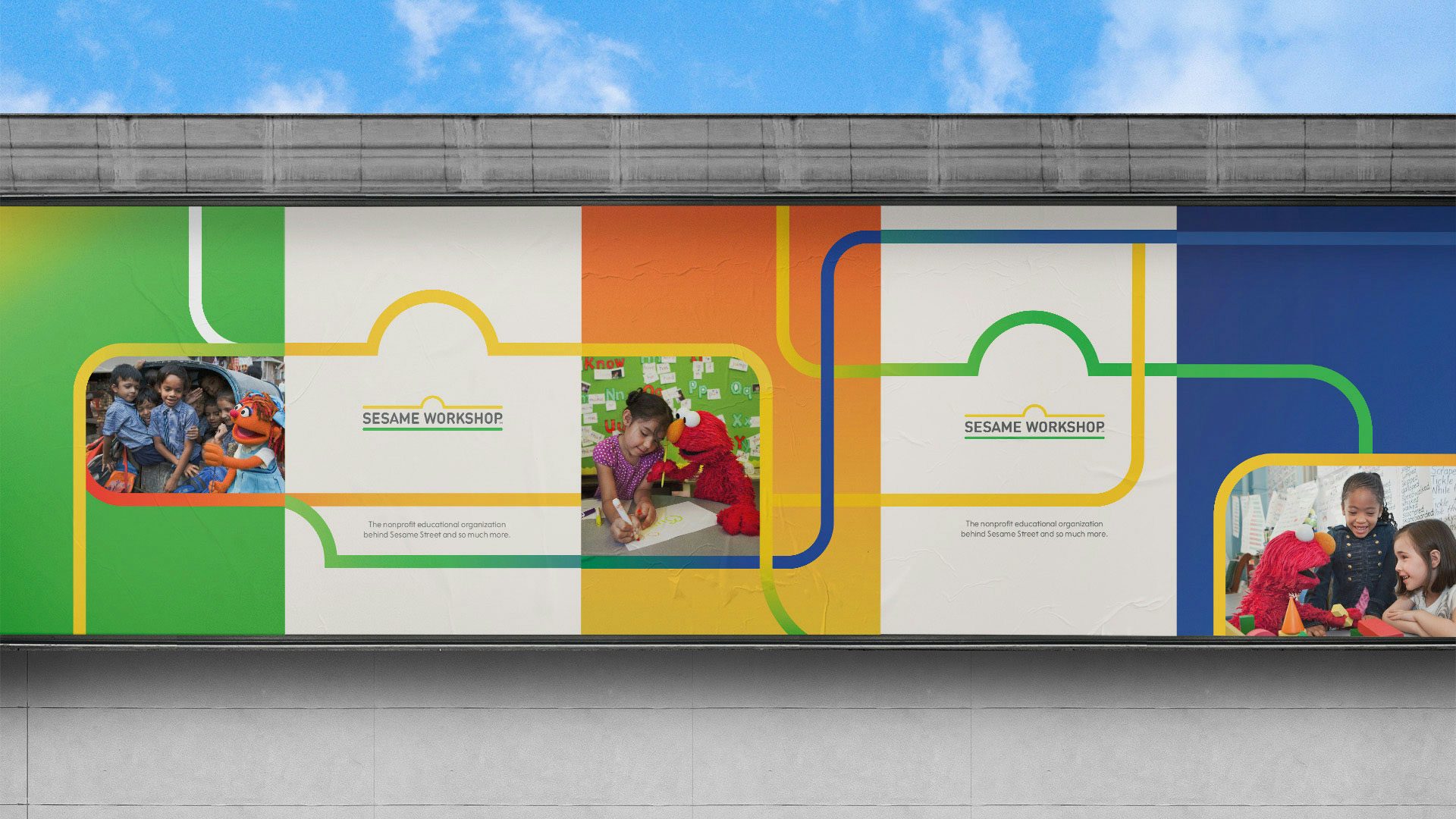Sesame Workshop on how design is helping its mission
The non-profit has just released an updated look and feel, in part to separate it slightly from Sesame Street, which is one of a number of projects it works on. Here, we get the back story to the new branding, and the workshop’s wider work
“The Sesame Street brand has been in everyone’s hearts for the last 50 years, and it was time for us to make sure that everyone knows the difference between Sesame Street and Sesame Workshop,” says design director Victor Newman on the brand’s recent identity update. “Our goal was to refresh our look and to elevate and unify our brand globally.”
Against the backdrop of the Civil Rights movement and the War on Poverty, Sesame Street was created in 1969 as a way to use television to help prepare disadvantaged children for school. Once the show found its preschool audience, Sesame Workshop, originally known as the Children’s Television Workshop, stepped in to ask how it could “serve other populations and meet other educational goals”.
Now it operates as a non-profit organisation responsible for producing the well-known and loved Sesame Street but also a range of other educational children’s shows, as well as social impact initiatives, schooling programmes and research and innovation projects. Its mission was and remains “to help children everywhere grow smarter, stronger, and kinder”.
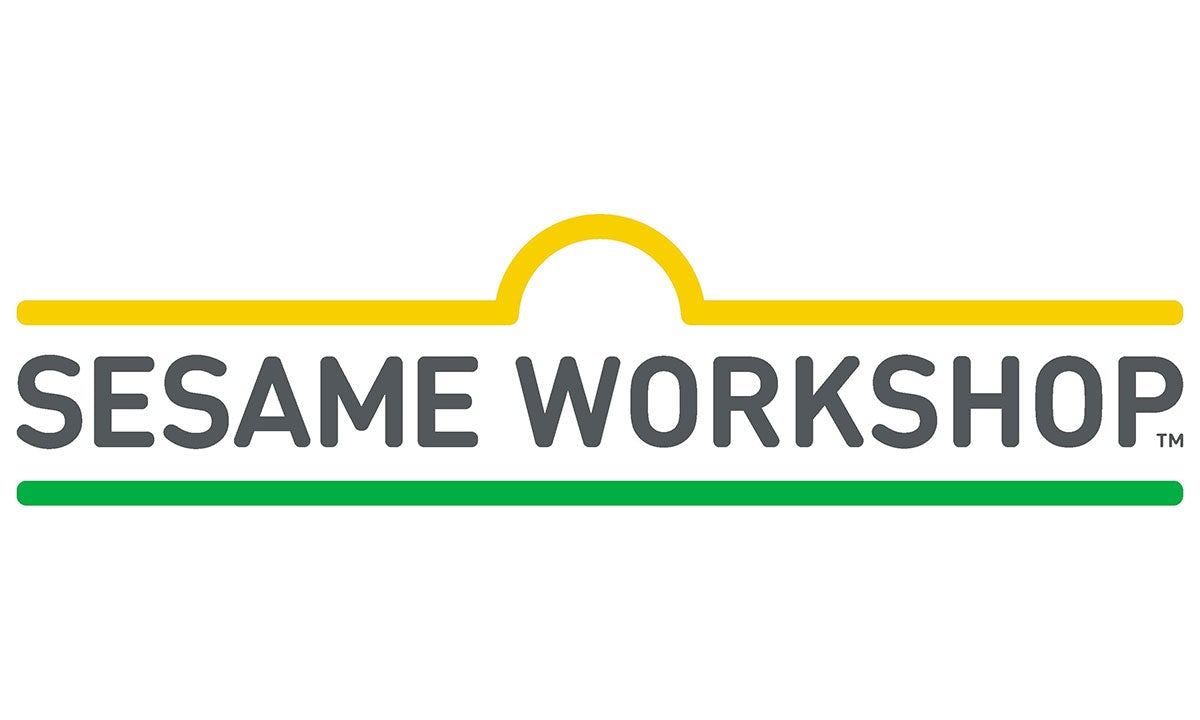
Last month the brand released a clearer identity to unify and differentiate the two parts of the business. “When the brand started it transformed how we talk to and interact with children. They put everything into speaking to children in a different way, putting them on a positive path and actually educating them,” says Newman.
“Part of the rebrand was to remind people of that, and to move away from the perception of just being an entertainment company. A lot of people still see us as being a network, so we wanted to boost our look and feel, and put a bit of space between Sesame Street and Sesame Workshop to understand what the two entities are.” Sesame Workshop recently redefined its position as a mission-driven organisation, and it’s hoped this identity refresh will raise brand awareness and essentially free up its teams to focus on the bigger picture.
The new system has been created with New York-based agency Trollbäck+Company, and they felt it was important to acknowledge its biggest export so the new logo is a knowing nod to the Sesame Street sign. Beyond this, the idea was to celebrate the diverse, philanthropic work Sesame Workshop creates, so an echo of the street sign logo is repeated and used throughout as map-like lines to create an “ecosystem of streets and intersections” that expand the brand’s visual vernacular.
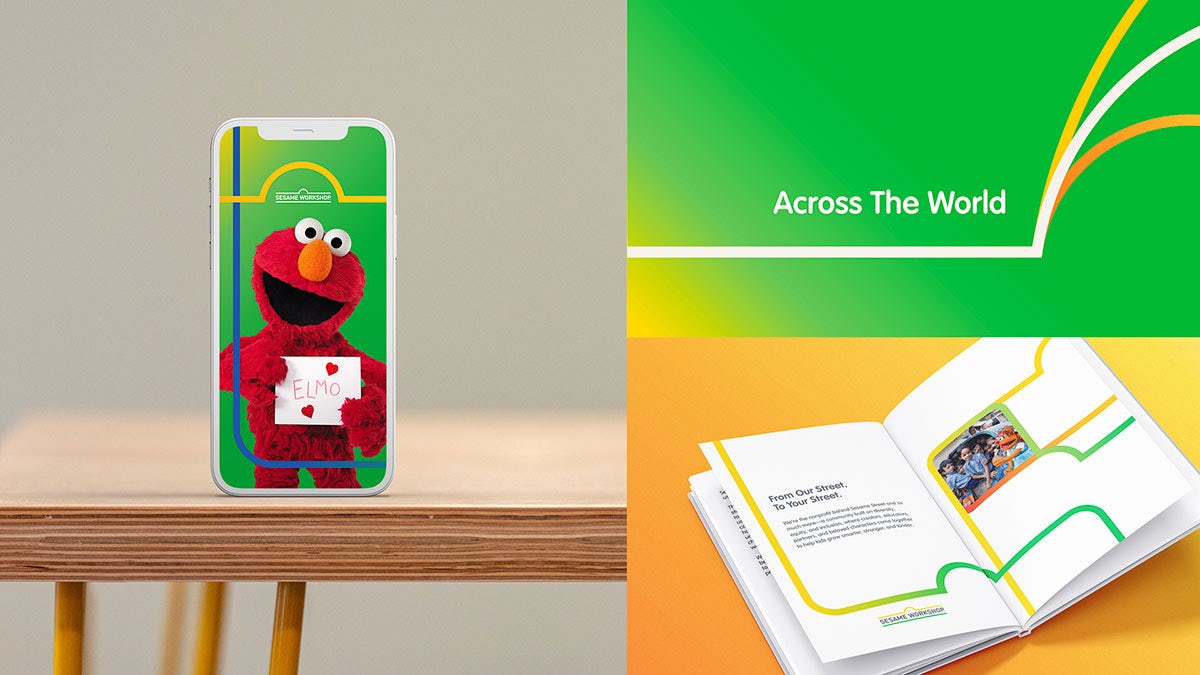
“There’s decades of brand equity in the Sesame Street logo and we wanted to make sure that this look and feel was rooted in that,” says Newman. Motion graphics also form part of the identity so the lines extend from opposite sides of the screen and overlap to “signal cross-collaboration”. The colours used aim to represent the non-profit’s “bold, visionary approach to education and philanthropy”.
The Workshop identity is more graphic and less textural than Sesame Street’s, but it still has the same happy, bright tone helped by the grassy green, sunshine yellow and sky blue colour palette. On the surface, these colour choices may seem simple, or obvious even, but through this project the team came to realise the importance of colour in creating a recognisable brand, especially when that brand is synonymous with the Muppets.
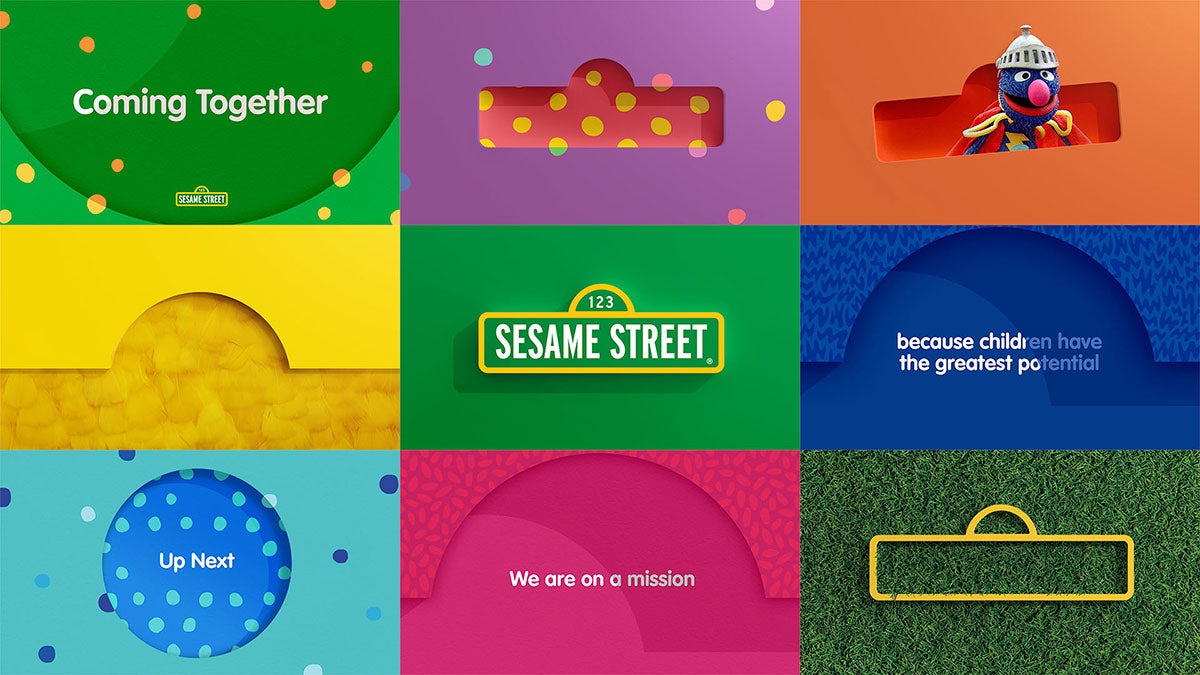
“At the very early stages of the job we knew we wanted the characters to inform the identity in some way and at one point we had a very reductive simplified idea that it would just be colour and the eyes of each muppet,” remembers Rosie Garschina, executive creative director at Trollbäck+Company. “My daughter came up and she saw red and an orange nose and then some eyes and said ‘Elmo!’ just based on those colours. That felt incredibly powerful that I could connect with it and my one-and-a-half-year-old could as well from just those basic elements.”
As guardian of the brand, this plays into Newman’s idea that the system for both the Workshop and the Street had to come from the same DNA, partly because one his tasks is to bring together the brand’s global co-production partners. “Our focus is always to drive home our mission,” says Newman. “We make sure everything is on brand so that no matter if you’re looking at Sesame Street in the Middle East (Ahlan Simsim), or in Latin America (Plaza Sésamo), there’s a cohesive look and feel. There’s always a connection regardless of where that piece of work is coming from.” Essentially, with this new system in place, the hope is for Sesame Workshop to easily connect Big Bird with his feathered cousins across the globe simply with a change to the colour palette, rather than a time-consuming redesign.

Aside from this branding work, the kind of projects Newman and his team work on are varied, including helping license shows, taking Sesame Street to a new territory, printed materials for a Workshop event, or branding a new report being published under their Research and Innovation arm. They are responsible for the experience being the same across every part of the business. “This new identity aims to help people engage with us,” says Newman. “So design plays a role in everything we do, it informs how we speak to our audience and speak to the children that we serve.”
The new system is an anchor to the work that is happening throughout Sesame Workshop. For instance, outside of Sesame Street, the Workshop produces a number of other children’s TV shows, some utilising the recognisable Muppet characters in animated form, and others riffing off popular grown up shows such as The Not-Too-Late Show with Elmo which sees celebs getting interviewed, telling jokes and singing songs with Elmo before his bedtime.
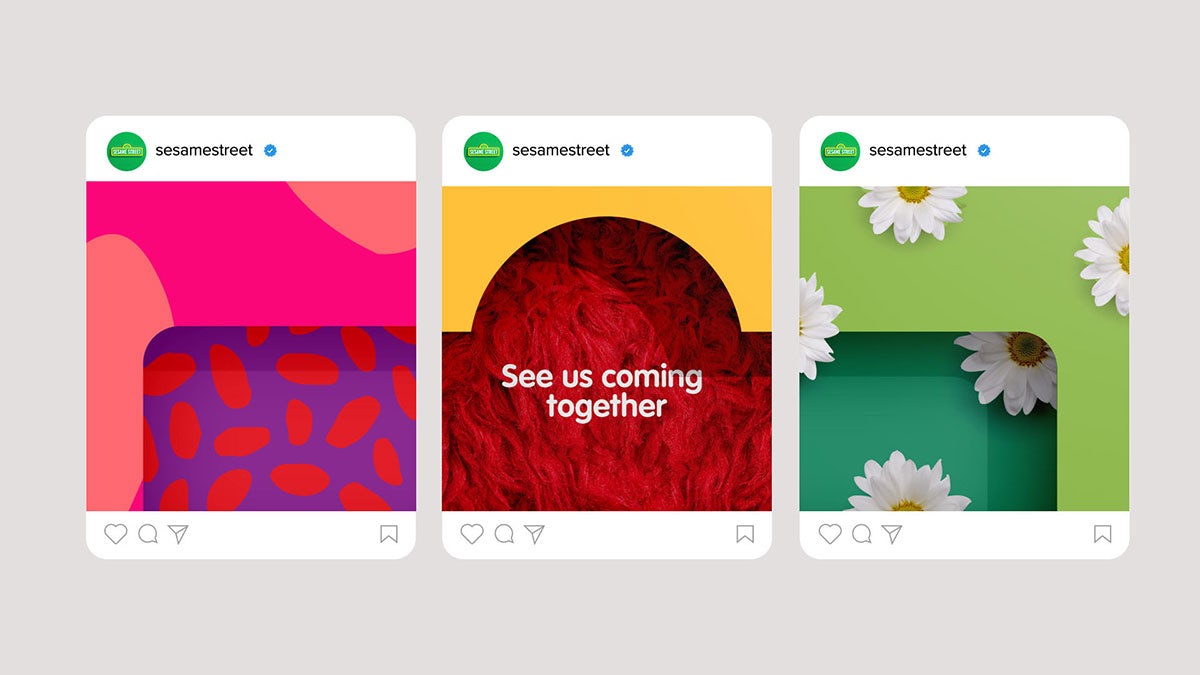
While these shows are entertaining, the main goal is still to educate children and over the years Sesame Workshop has used its shows to creatively keep that mission going. For instance on Sesame Street, new characters have been periodically added to highlight important issues, or support the initiatives the Sesame Workshop is building. Take four-year-old Muppet Julia who joined the street several years ago and became a recurring character. She has autism and her first appearance coincided with the launch of Sesame Street and Autism: See Amazing in All Children, an initiative which offers families free bilingual tools and tips to manage common challenges, simplify everyday activities, and to grow connections.
Sesame Workshop has also conducted numerous studies and reports in response to their audience and what’s going on in the world, with two recent ones including Coming together: Family Reflections on Racism, and Caring for Each Other: Children’s Hopes and Fears Amongst Covid. They also regularly create educational resources and programmes for children and families affected by crises under the initiative, Welcome Sesame. Most recently this has seen them create educational resources for those families affected by the conflicts in Afghanistan and Ukraine.

Working with the most vulnerable children around the world is ultimately why Newman and Garschina are so passionate about the impact this new branding system will have going forward. “As a non-profit we’re not trying to sell anything, our goal is always to educate. We’re focused on what our mission is, how we’re speaking to children and families, and making sure we provide something that’s going to benefit our audience,” explains Newman. “That’s one reason why we want to make sure this new branding actually separates Sesame Street and Sesame Workshop so we’re able to speak to our audience in different ways.”
Working in an organisation with such a legacy comes with certain expectations, but Newman doesn’t feel any pressure and regards it more as a privilege. “I have a connection to Sesame Street, and I feel like I’ve come full circle,” he says. “Our obligation is to make sure our legacy continues on in a meaningful way. When you see people’s reactions to the Muppets, even today, it’s great being able to work on a brand that puts a smile on everyone’s face. So it’s important to showcase the work in a way that people can appreciate it.”
